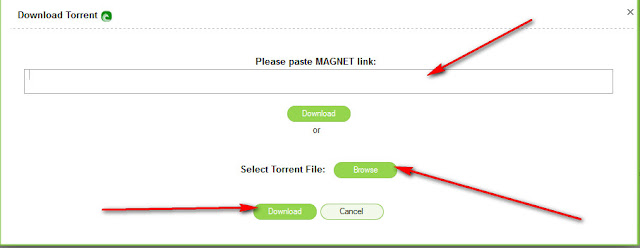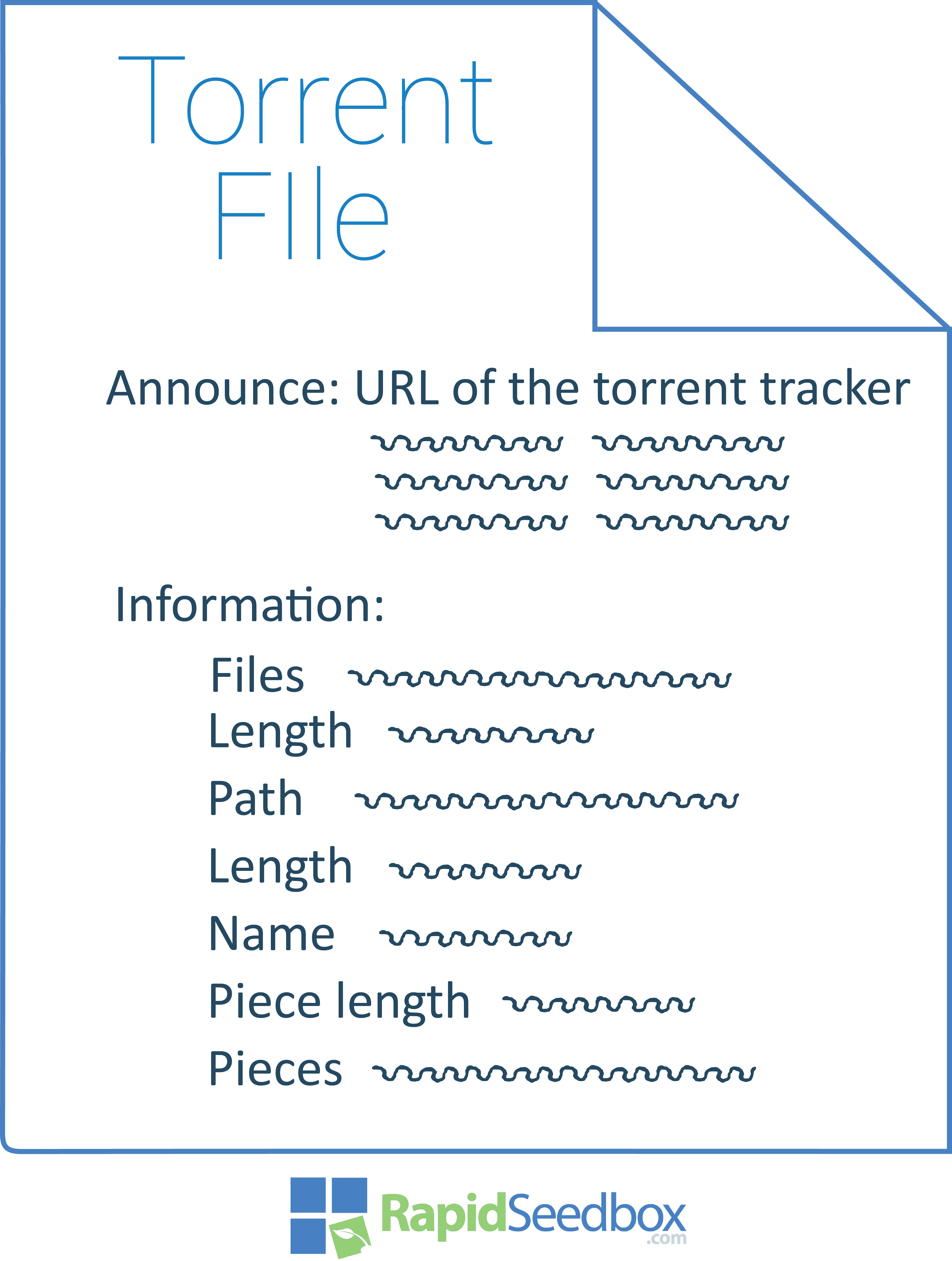Torrent: A torrent is basically a file extension (.torrent) for the torrent file which contains all the information like tracker & location of the downloading file. The reason of speed of downloading any torrent file depends on many factors like – Seeders, Leechers, Peers etc.
Bookmark and share page
Torrents are used by people to download large files (and often bootleg copies of programs or other files) through the internet. Used by programs such as BitTorrent, TORRENT files contain metadata and a list of network locations of trackers which help participants to find one another, or to distribute groups called swarms. These files do not actually contain the downloaded content, but serve as a means to obtain and download the requested files. TORRENT files serve as keys to download the file it speaks of. TORRENT files are small but make downloading large amounts of data possible. Pieces are defined, listed, and given metadata to help users find the right folders and download speeds.

Technical details of TORRENT files
TORRENT files are divided into information chunks, or pieces, and those pieces are downloaded with high speeds by requesting the information from various sources, decreasing the burden of one network sending the file. The numbers of peers (who make downloading the file possible) changes but it does not affect the download speeds unless the number of peers drops drastically. Generally, higher numbers of peers means faster download speeds. Once all pieces are received they are assembled into the proper order and pieces may be shared with others seeking to download or upload the same set of files. BitTorrent Enhancement Proposals may include additional metadata not found in the basic TORRENT files.
More information about the TORRENT file format
| File extension | .torrent |
| File category | Misc |
| Associated programs | BitTorrent uTorrent Vuze BitComet FlashGet Shareaza Headlight GetRight BitLord Ares Deluge Opera |
| Useful links | More information on TORRENT files |
| Developer | BitTorrent, Inc. |
Convert your TORRENT file to another file format
More online converter
Spend enough time on the Internet or around tech-savvy types, and you’re bound to hear about BitTorrent. Likely, if you’re new to the concept, you have a few questions, and probably some misconceptions on what exactly torrenting is.
What is a torrent file? How do you use it? Is it safe? Is it legal? Torrenting can be a complicated process, so before we get into the meat of how to download and use torrent files safely and legally, let’s cover some important terminology.
Updated 3-3-2016 by Brendan Hesse: This article received a massive overhaul to provide clearer, more detailed information regarding torrent files, how to download them, and how the process works.
What is a Torrent?
If you’ve dabbled at all in torrent downloading, you’ve almost certainly come across the terms “seed,” “peer,” and “leech.”
A seed (or seeder) is someone who is sharing the file; the more seeds, the more potential locations to download the file. Someone who is downloading the seeded file is a leech. The more leeches a file has versus seeds will make the file download slower, as there are more people accessing the file. Furthermore, if no one is seeding, then no one can download. The entire group of seeders and leeches are your peers — hence why BitTorrent is referred to as “peer-to-peer” file sharing. You collect a file directly through someone else, rather than downloading from a server. This cluster of peers is also referred to as a “swarm,” who are all uploading and downloading the same file.
How exactly does this work? Essentially, the file is broken up into pieces, with each piece being downloaded and compiled by the download program. After you’ve downloaded enough data, you will begin to simultaneously upload the parts of the file you’ve downloaded, thereby increasing the download speed for your other peers in the swarm. Download clients give preferential treatment to those who allocate more bandwidth to uploading, and who are seeding files. Basically, the more you share, the more you receive.
Another term you may have come across is “tracker.” A tracker is a server that keeps track (go figure) of all peers in a swarm, but does not host any part of the file. Instead, a tracker acts as something of a traffic cop, directing peers to available file locations. Your download client will connect to this server as instructed in the .torrent file. There is such a thing as “trackerless” downloading, which we will cover more in a moment.
Installing a BitTorrent client and downloading files
In order to open a .torrent file and begin downloading, you need a download client to handle the file. In the past, this guide has featured numerous torrent download clients, but the current best options are qBittorrent, Transmission, and Deluge.
These three programs have some minor differences, but they’re generally very similar. They’re all open source, and all three support various operating systems, including Windows, OSX, Freebsd, and various Linux Distros. Best of all, they are all devoid of annoying ads, useless “special offers,” or malicious bloatware.
Once you’ve settled on which torrent client you’ll be running, download and install it. An obvious step, yes, but having an installed torrent program is important because it enables you to download torrents via magnet links. You can always download .torrent files and open them with your downloader, but magnet links have been slowly overtaking .torrent files in terms of popularity and use.
Open Torrent Files online, free
Downloading a torrent
After installing a downloader client, such as qBittorrent, you’ll need files to download. There are many website you can use to download .torrent files or access magnet links, the most well-known being The Pirate Bay. Others, such as Kickass torrents, exist, but they usually lack the user base of The Pirate Bay. There are also private trackers, such as Demonoid, that require an account to access.
Type Of File Says File

A quick search through these web will probably help you find what you’re looking for, but take care before downloading as some files can be fake. Check the comments on the file’s download page as users will report fake or broken files. When you open the .torrent, double check the file you’re downloading — if you’re expecting a .rar file, and see an .exe, it’s not the file you’re looking for and likely is a virus. Cancel and delete the download immediately. We will cover further safety tips in later sections.
Download Torrent Type Of File Is File A Pdf
If the torrent looks legitimate, the download page will likely list two methods for downloading: .torrent or a magnet link. Considering there are two download methods, you might be wondering what the difference is between the two.
Torrent Files Download Sites
.torrent files can essentially be described as treasure maps. These tiny files contain the locations for the various parts of files. Your download client will use the file to find the various parts of whatever it is your downloading, download the parts, the compile them into the file.
Magnet files work much the same way, but are a direct line connecting the downloader to each file, instead of needing to follow a “map” as provided by a .torrent file. There are further, more technical differences that have to do with tracker servers and DHT procedures, but we’ll leave those alone for now.
If your goal is simply to download a file with a BitTorrent client, both methods work great. Magnet links take a slight bit longer to begin due to establishing direct connections, but they also remove the step of downloading and opening a .torrent file. Regardless of the acquisition method, once a download begins, your speeds will be dependent on the swarms seed-to-leech ratio, and your bandwidth.
Download Torrent Files Free
Once the download has completed, you will have access to the file, and you will begin to seed the file. While seeding does up your priority for downloads, it also increases your risk for being caught if you’re seeding copyrighted files. If you do not wish to seed you can either completely close your download program, or you can delete the .torrent, usually by right clicking the seeding file in your client and selecting “delete .torrent.” Be sure not to delete the data, however, or you’ll need to re-download the entire file.